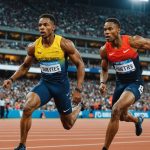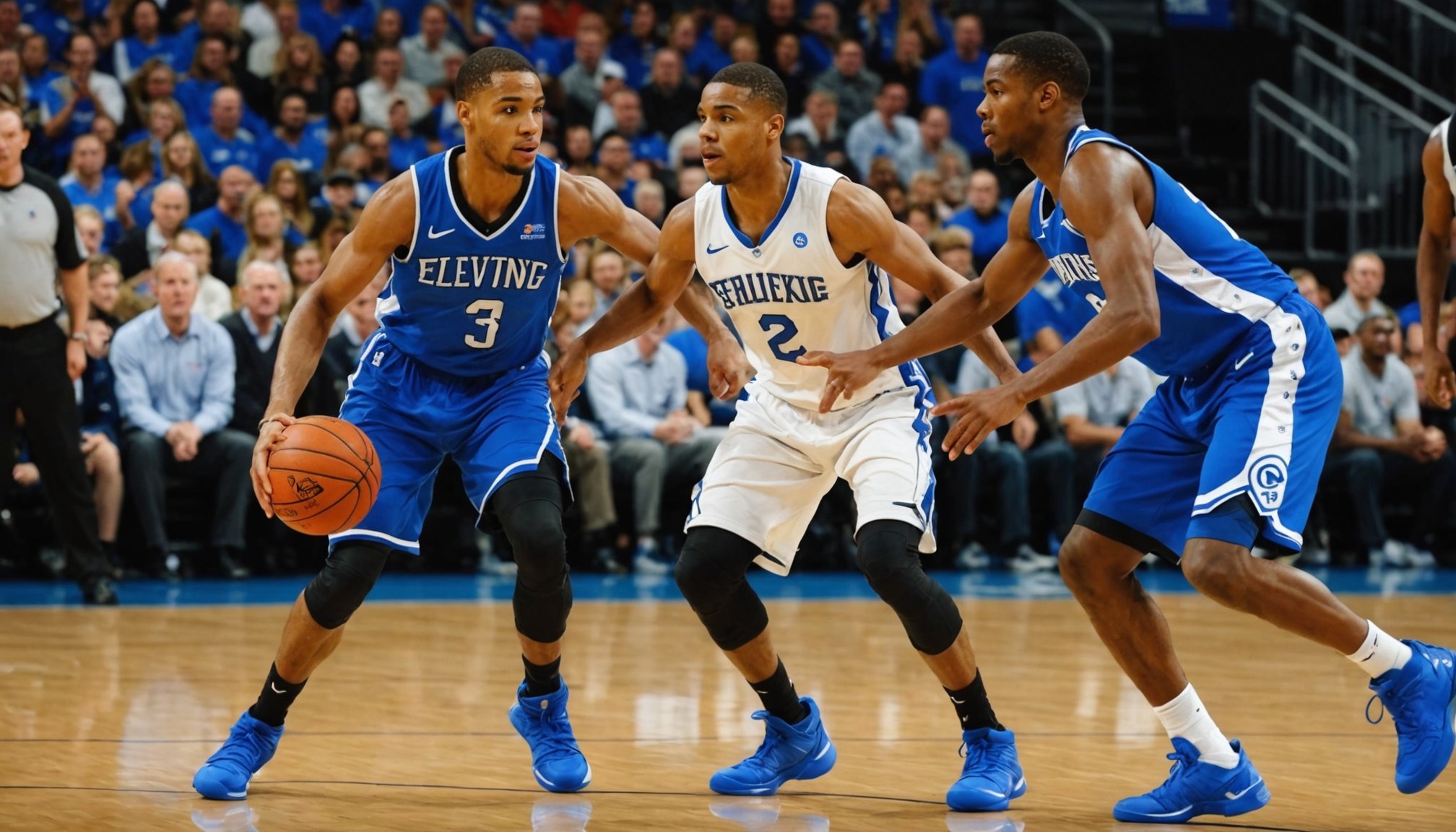Understanding the Role of Point Guards in Leadership
Point guards play a crucial role in basketball, acting as the on-court leaders responsible for managing team dynamics and strategy execution. Their leadership is vital as they orchestrate plays, communicate effectively, and ensure every team member knows their role.
A point guard’s key responsibility is to facilitate communication among players, maintain high energy levels, and inspire teammates. They must have exceptional decision-making skills, often predicting and reacting to opponents’ strategies. Effective communication skills in basketball are fundamental, as point guards are the primary link between the coach’s plans and the team’s execution on the court. This involves directing the flow of play, calling out signals, and adjusting tactics on the fly.
This might interest you : Top Dietary Strategies for UK Basketball Forwards to Boost Muscle Mass Effectively
In UK basketball history, examples of successful point guards include Andrew Sullivan, known for his strong leadership and ability to read the game. Another notable player is Justin Robinson, who excels in maintaining composure under pressure, guiding his team with precision and poise. These exemplary point guards demonstrate how vital leadership and communication are in achieving success on the court. By emulating their qualities, aspiring point guards can enhance their efficiency and impact within their teams.
Effective Communication Techniques for Point Guards
Point guards play a pivotal role in orchestrating the game. Effective communication strategies are essential to enhance team performance and cohesion.
Also to read : Boosting Performance: Essential Hydration Strategies for UK Basketball Players
Verbal Communication Skills
Mastering verbal communication involves clear instruction and motivational techniques. Point guards should give concise directions and uplift their teammates by utilizing positive reinforcement. This approach not only clarifies team objectives but also boosts team morale. Additionally, adjusting the communication style to suit different players can bridge understanding and foster synergy. Some players respond better to direct communication, while others may thrive on encouragement and support. Tailoring your verbal interactions can significantly impact team dynamics, ensuring everyone feels understood and valued.
Non-Verbal Communication Skills
Non-verbal cues, such as body language and eye contact, are equally crucial. A strong gaze can convey confidence, while poor non-verbal cues might signify uncertainty. Establishing rapport through gestures and facial expressions can strengthen team bonds. Subtle actions, like a nod or encouraging smile, reinforce verbal messages and signal agreement or encouragement. Understanding non-verbal communication also helps players interpret team dynamics, allowing for better teamwork even under pressure.
Listening and Feedback
Active listening is pivotal for team success. It involves fully engaging with teammates’ concerns and perspectives, leading to effective solutions. Constructive feedback should be specific and aim to improve. By fostering an environment that encourages open dialogue, teams can address issues collectively, paving the way for improvement and unity.
Building Team Dynamics Through Leadership
Developing team cohesion requires strategic leadership practices that focus on trust building and fostering unity. A critical strategy for establishing trust within a team involves open communication. By encouraging honest dialogue and active listening, leaders can create an environment where team members feel valued and understood. This sense of safety nurtures reliability and trust among team members.
Setting clear goals and shared objectives is another vital component of leadership dynamics. When every member of a team understands the group’s mission and objectives, they are more likely to work harmoniously towards these common goals. This alignment in purpose enhances collaboration and reduces chances of misunderstanding or conflict.
One cannot overlook the importance of a point guard-like role within team dynamics. This role involves mediating conflicts and promoting teamwork by ensuring everyone’s voice is heard and valued. A point guard leader facilitates discussions, resolves disputes amicably, and champions collective progress.
By focusing on these tactics, leaders can craft a team environment rooted in trust, harmony, and shared objectives, ultimately boosting performance and team satisfaction. In achieving effective team cohesion, strong leadership dynamics serve as the cornerstone for success.
Drills and Exercises to Enhance Leadership Skills
On and off the basketball court, the right drills can significantly improve a player’s leadership skills. They combine physical execution with critical thinking to nurture effective communication.
On-Court Drills for Communication
Engage in 3-on-3 small-sided games. This setup emphasizes the importance of calling plays audibly and assertively. Such games foster quick-thinking and demand decisive communication among teammates. Another effective drill is the relay drill, designed to enhance fast communication under pressure. Participants need to convey messages swiftly, simulating real-game scenarios that test their clarity under stress. By incorporating role-play situations, players practice leadership responses by adopting different roles to see varied perspectives, honing their decision-making skills.
Off-Court Exercises for Leadership Conditioning
Leadership skills extend beyond the court. Team-building activities bolster camaraderie, fostering an environment where leadership naturally emerges. In scenario-based discussions, participants strategize communication approaches, preparing them for various team dynamics. Workshops focusing on conflict resolution and negotiation empower players to handle disagreements effectively, an essential trait for a leader.
Evaluation of Leadership Growth
Measuring leadership progress is crucial. Using metrics helps track development, emphasising areas needing improvement. Peer feedback is invaluable, providing insights from a teammate’s perspective. Analyzing game footage allows leaders to review their communication’s effectiveness, enabling strategic adjustments for future improvements.
Insights from Coaches and Experienced Players
Understanding the strategies these professionals employ can truly revolutionize one’s approach to basketball. UK basketball coaches emphasize the necessity of effective communication. This central theme emerges repeatedly in interviews with seasoned coaches who consider communication crucial for fostering trust and cohesiveness within a team. Communication begins with listening actively to players during practice, ensuring they feel heard and understood.
From the perspective of player experiences, diving into the lives of successful point guards offers valuable case studies. These players often demonstrate exemplary leadership styles, characterized by decisive playmaking and the ability to inspire teammates. Their approach often involves maintaining a cool demeanor under pressure, underscoring the importance of composure and strategic thinking.
Moreover, mentorship plays a pivotal role in nurturing leadership qualities in budding players. Veteran players frequently assume mentoring roles, sharing insights drawn from personal trials and triumphs that younger players can relate to and learn from. This mentorship extends beyond basketball fundamentals, encompassing guidance on balancing personal life and professional commitments.
One cannot overlook the transformative power of collaborative training sessions where coaches and experienced players join forces to hone the leadership abilities, emphasizing holistic growth both on and off the court.
Additional Resources for Point Guards
In the ever-evolving world of basketball, point guards are the dynamic leaders on the court. Leveraging training resources precisely tailored for them is crucial for success.
Recommended Reading for Skill Development
Understanding basketball communication and leadership goes beyond just practice; it’s a science. Delve into books on leadership that emphasize building strong team interactions. These resources often incorporate insights from sports psychology, offering a strategic edge. Articles by sports psychology experts can enhance your team’s dynamics, focusing on improving communication and motivation skills to foster a winning mentality.
Video Resources for Practical Learning
Visual learners can greatly benefit from video tutorials. These practical resources feature drills and exercises demonstrated by seasoned professionals, providing a clear representation of necessary skills. Tutorials on leadership techniques by experienced athletes offer a firsthand glimpse into mastering leadership on the court, making them invaluable for aspiring leaders seeking to improve their game dynamically.
Community and Online Platforms
Joining forums and engaging in discussions can provide a deeper understanding of real-world experiences. Participating in UK-specific basketball forums enables point guards to share experiences and learn from peers. Additionally, numerous online courses and seminars focus on nurturing leadership skills within sports. Such platforms offer an accessible way to continuously develop and refine leadership capabilities, crucial for any point guard aiming to excel.






